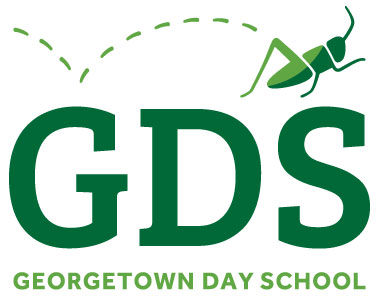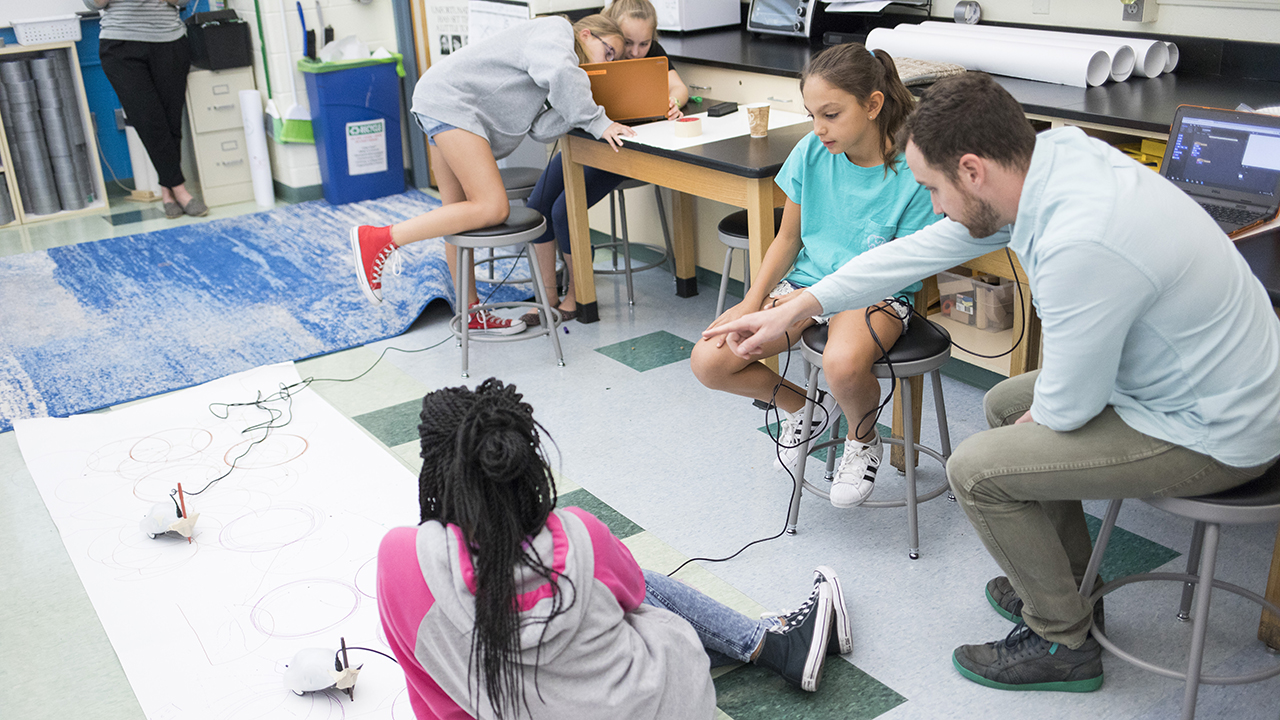One of my education mentors describes the path to great teaching in the following way: “You can be a teacher with 30 years of experience, or you can be a teacher with one year of experience 30 times. The difference is reflective practice.”
Like any complex skill, teaching requires practice. Effective practice doesn’t just mean doing something over and over with vague hopes of improvement. Instead of teaching the same topic in the same way each year, teachers must hone their craft with a goal in mind and evaluate their effectiveness in reaching that goal, measuring success in improved student outcomes or alignment with best practices. It is this cycle of action, reflection, adjustment, and action that leads to growth and evolution—to being a teacher with a true 30 years of experience.
At GDS, “reflective practice” is built into our approach to teaching and learning, whether through annual goal-setting, classroom observations, student feedback, or regular evaluations. In addition to reflecting on teaching practice, individual faculty members and departments are charged with the ongoing assessment and evolution of their curriculum. This year I gave the faculty a specific charge around curriculum, asking that each teacher evolve one unit with an eye to:
A GDS Student will…
- Build networks and collaborate across difference
- Innovate and create
- Take risks, tolerate failure, and learn from failure
- Self-advocate
- Think critically
- Communicate clearly and powerfully
- Tackle complex problems
- Learn actively and resourcefully
- Engage as a just, moral, ethical citizen
- Lead
- Cognitive Science (drawing on our faculty summer read, Why Don’t Students Like School? A Cognitive Scientist Answers Questions About How the Mind Works and What It Means for the Classroom);
- The capacities articulated in “A GDS Student Will…”; and
- Cross-disciplinary connections.
The following are examples of how teachers responded to this charge and evolved their curriculum this year:
- In sixth grade math and science, Seamus Burns and Laura Loftus, along with several of our high school students, partnered with MS science teacher Stephen Harris to introduce a new five-week unit to teach block coding and programming, culminating in the construction of student-designed robots.
- In second grade, Azurée Harrison and Danny Stock developed a new unit on persuasive writing. The students created a (Hop)Persuader Journal, learning to deploy facts and evidence to make a case for social change.
- In seventh grade English, Charles Edwards changed his approach to teaching the beloved novel, The Outsiders by S.E. Hinton using developmental psychology to explore the theme of masculinity in the book. Contemporary research reveals that from young ages, boys receive messages about what it means to be a boy, with an emphasis on physical strength, aggression, and sexuality. This research provided a new way of understanding this classic work, connecting it to students’ lived experiences.
- In High School Spanish, Maribel Prieto bridged language with civics in creating a “summit” to explore contemporary issues experienced by indigenous communities. Groups of students took on a range of roles, including the representatives of both a new government in Guatemala and American NGOs, to better understand the complexities of this topic. Importantly, the entire summit was conducted in Spanish!
- In kindergarten, Joanna Phinney and Angela Sandford collaborated on a new unit on families using the Understanding by Design framework to ensure that individual students developed a deep understanding of the concept of family. In class, Joanna and Angela used the following essential questions: How do families differ? What ways can families show love and affection for each other? What is the same about all families? What kinds of things do families do differently? How do families show love when things don’t go right? Their goal is to ensure that each of their students develops a rich understanding of the topics they are covering, and that they do not leave this understanding up to chance.
- In Middle School Algebra, Jana Rupp rearranged units with the goal of strengthening retention and fostering connections between topics. Anchor problems are used throughout the year to build a stronger conceptual understanding of math applications. For example, exponential functions are explored by watching a “Mythbusters” video which dispels the myth that paper can’t be folded more than seven times, modeling an exponential relationship between number of folds and layers of paper.
- Seventh and eighth grade science teachers introduced a new lab methodology called Argument Driven Inquiry, in which students focus on both oral and written defense of their hypotheses and experimentation. This approach provides students an opportunity to design their own experiments to answer a guiding question.
- In High School Spanish, Trish Heatherman has adopted a range of new practices to help her students grow more comfortable with risk-taking, which is essential when learning a new language. To evolve her practice, Trish has drawn on a range of research-based publications as well as strategies from the American Council for the Teaching of Foreign Languages to advance her goal.
- Middle School math teacher Amanda Riske has incorporated service learning into the teaching of statistics. Her project called “Slow Data Collection: Analyzing frontpage news through math” has engaged her students in applied learning, connecting their work in math class to what is happening in the world beyond our walls.
These are but a few of the countless ways that GDS teachers are evolving and refining their teaching each year, all with the goal of improving learning outcomes and daily experience for our students. Importantly, these teachers will gather feedback on these units, fine tuning them so that they can even better serve their students next year. It is this commitment to continuous improvement that builds a faculty of true veteran teachers, teachers with thirty years of experience and not a single year of experience year after year.


